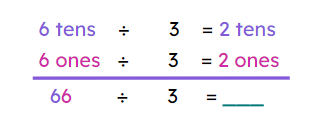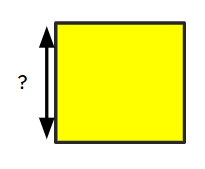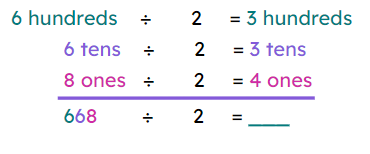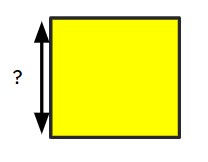Myths about teaching can hold you back
- Year 5
Divide a 3-digit by a 1-digit number using partitioning and representations (no remainders)
I can divide a 3-digit by a 1-digit number using partitioning and representations (no remainders).
- Year 5
Divide a 3-digit by a 1-digit number using partitioning and representations (no remainders)
I can divide a 3-digit by a 1-digit number using partitioning and representations (no remainders).
These resources will be removed by end of Summer Term 2025.
Switch to our new teaching resources now - designed by teachers and leading subject experts, and tested in classrooms.
These resources were created for remote use during the pandemic and are not designed for classroom teaching.
Lesson details
Key learning points
- Partitioning the dividend into hundreds, tens and ones helps when dividing a 3-digit by a 1-digit number.
- Use times tables and unitising to divide the hundreds, tens and ones by the divisor.
- Place value resources can represent the division.
Keywords
Dividend - The dividend is the amount that you want to divide.
Divisor - A divisor is the number we divide by.
Partial quotient - A partial quotient is seen when the dividend is partitioned.
Partition - Partition means splitting an object or value down into smaller parts.
Quotient - A quotient is the result after division has taken place.
Common misconception
Lack of understanding of place value may lead to the rise of incorrect partial quotients.
Encourage children to identify what each digit represents. If misconceptions persist - use place value counters to divide by skip counting.
To help you plan your year 5 maths lesson on: Divide a 3-digit by a 1-digit number using partitioning and representations (no remainders), download all teaching resources for free and adapt to suit your pupils' needs...
To help you plan your year 5 maths lesson on: Divide a 3-digit by a 1-digit number using partitioning and representations (no remainders), download all teaching resources for free and adapt to suit your pupils' needs.
The starter quiz will activate and check your pupils' prior knowledge, with versions available both with and without answers in PDF format.
We use learning cycles to break down learning into key concepts or ideas linked to the learning outcome. Each learning cycle features explanations with checks for understanding and practice tasks with feedback. All of this is found in our slide decks, ready for you to download and edit. The practice tasks are also available as printable worksheets and some lessons have additional materials with extra material you might need for teaching the lesson.
The assessment exit quiz will test your pupils' understanding of the key learning points.
Our video is a tool for planning, showing how other teachers might teach the lesson, offering helpful tips, modelled explanations and inspiration for your own delivery in the classroom. Plus, you can set it as homework or revision for pupils and keep their learning on track by sharing an online pupil version of this lesson.
Explore more key stage 2 maths lessons from the Division by partitioning leading to short division (2 and 3-digits by 1-digit) unit, dive into the full primary maths curriculum, or learn more about lesson planning.

Licence
Prior knowledge starter quiz
6 Questions
Q1.Identify the multiples of 9
Q2.Izzy is working out: 84 ÷ 4. She can skip count in ___s.
Q3.Fill in the gap. Write your answer in numeral form.

Q4.Which partitioning of 56 shown would be most efficient to solve: 56 ÷ 4?

Q5.Use the partitioning strategy to solve: 42 ÷ 3. Write your answer in numeral form.
Q6.Use the partitioning strategy to solve this question: A square has a total perimeter of 80 cm. What is the length of one side ? Write your answer in numeral form.

Assessment exit quiz
6 Questions
Q1.Identify the multiples of 6.
Q2.Izzy is working out: 669 ÷ 3. She can skip count in s.
Q3.Fill in the gap in this layout for division.

Q4.Which partitioning would be most efficient to solve: 848 ÷ 4?

Q5.Use the partitioning strategy to solve: 636 ÷ 3
Q6.A square has a total perimeter of 884 cm. What is the length of one side?



